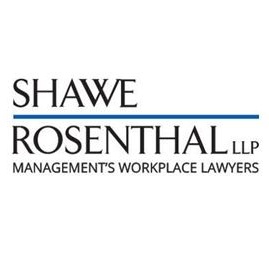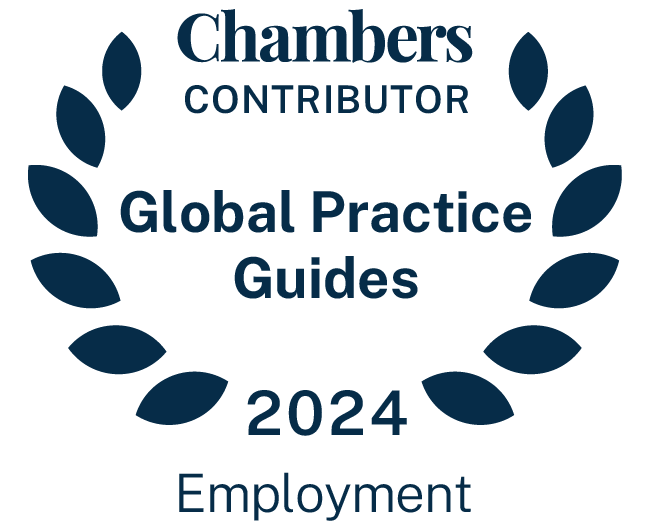The EEOC Releases Onerous Final Rule Implementing the Pregnant Workers Fairness Act
On April 15, 2024, the Equal Employment Opportunity Commission (EEOC) issued a Final Rule and Interpretive Guidance to implement the relatively new Pregnant Workers Fairness Act (PWFA), which was enacted by Congress in December of 2022 and which already took effect on June 27, 2023. The Final Rule and Interpretive Guidance provide guidance, with many illustrative examples, on how the EEOC plans to interpret employers’ obligations under the PWFA – and in some cases, expands the obligations beyond even the heightened standards under the Americans with Disabilities Act.
Background on the PWFA. The new law requires covered employers to provide reasonable accommodations to a worker’s known limitations related to pregnancy, childbirth or related conditions, unless it would cause the employer an undue hardship. According to the EEOC, reasonable accommodations are available to help apply for a job; to perform a job; to enjoy equal benefits and privileges of employment; and to temporarily suspend the performance of an essential function of a position, if certain conditions are met. The reasonable accommodation obligation applies even if the employee has an uncomplicated pregnancy, based on the premise “that even uncomplicated pregnancies may create limitations for workers.”
The EEOC issued its proposed rule to implement the PWFA for public comment on August 7, 2023. The proposed rule was met with immediate controversy, and the EEOC received around 100,000 comments. Much to the dismay of employers, however, the Final Rule is little changed from the proposed rule, while the Interpretive Guidance reinforces and expands upon the EEOC’s aggressive approach to defining the broad scope of an employer’s obligations under the PWFA. Of additional interest, the Interpretive Guidance contains many examples to illustrate situations under the PWFA.
What the PWFA Does. According to the Final Rule, the PWFA:
- Requires employers to provide a reasonable accommodation for known limitations of a qualified employee or applicant related to pregnancy, childbirth or related medical conditions, absent an undue hardship
- Prohibits employers from requiring an accommodation that was not identified through an interactive process
- Prohibits the denial of employment opportunities based on the need to provide reasonable accommodation
- Prohibits employers from requiring employees to take leave if another reasonable accommodation is available
- Prohibits employers from taking adverse action based on a request for or the use of a reasonable accommodation
- Prohibits retaliation for opposing discrimination under the PWFA or participating in a proceeding under the PWFA
- Prohibits coercion of individuals in the exercise of their rights under the PWFA
- Provides remedies for violations
Important Definitions Under the Final Rule. The EEOC has established definitions for certain terms as follows:
- “Employee” includes applicants.
- “Known limitation” means a physical or mental condition related to, affected by, arising out of pregnancy, childbirth, or related medical conditions that the employee – or their representative – has communicated to the employer. The limitation need not meet the definition of a disability under the ADA, but may be minor, modest, or episodic. Like the ADA, the ameliorative effects of mitigating measures are not taken into account in determining whether there is a limitation, while negative effects may be. The mitigating measures, however, may be considered in determining reasonable accommodations.
- “Known” means that the employee or applicant, or their employee representative (meaning family member, friend, union representative, health care provider or other representative) must communicate the limitation to the employer (meaning a supervisor, manager, someone with supervisory authority or who regularly directs the employee’s tasks, human resources, or other appropriate official). Such communication may be made orally, and the employer cannot require it to be in writing or any other specific format.
- “Related medical conditions” is a non-exhaustive and extensive list of various medical conditions that relate to, are affected by, or arise out of pregnancy or childbirth. Of particular interest, the EEOC asserts that the term may include, depending on the specific circumstances of the case in question, the following: menstruation; lactation; infertility and fertility treatments; contraception; and abortion. Notably, this last condition was the target of over half the comments, and the EEOC reiterated in its commentary to the Final Rule that the inclusion of abortion is consistent with Title VII’s and the Pregnancy Discrimination Act’s definition of “pregnancy, childbirth or related medical conditions” under legislative history as well as both court and EEOC precedent.
- “Qualified employee or applicant” adopts the same ADA definition as meaning an individual who, with or without reasonable accommodation, can perform the essential functions of the job. With particular respect to leave, the EEOC specifies that the relevant question is whether the individual is reasonably expected to be able to perform the essential functions at the end of leave, or if they are qualified to perform those essential functions after returning. Of particular note and well beyond what the ADA expressly provides, the EEOC further asserts that the individual is qualified even if they cannot perform essential functions if (1) the inability is temporary, (2) the individual will be able to perform it “in the near future,” (meaning within generally 40 weeks for pregnant employees but undefined for others), and (3) the temporary inability can be reasonably accommodated (such as by temporary suspension of the function while performing the remaining essential functions, temporary transfer to another position, or light/modified duty).
- “Essential function” has the same meaning as under the ADA, and the analysis for determining whether a function is essential is also the same.
What Reasonable Accommodations Might Be Required? “Reasonable accommodation” includes a modification or adjustment to the application process, the work environment or manner/circumstances of performance, or to enable the individual to enjoy equal benefits and privileges of employment. Of significant concern, far beyond what the ADA provides, it also includes the temporary suspension of essential functions – up to 40 weeks for pregnant employees.
Other examples of reasonable accommodation include, but are not limited to:
- Making existing facilities readily accessible and usable
- Job restructuring; modified work schedules; reassignment to a vacant position; breaks; breaks for restroom, eating, drinking, or rests; acquisition or modification of equipment, uniforms, or devices; seating; modification of the work environment, examinations, or policies; modified/light duty; telework; adjustments to avoid increased pain or health risk; reserved parking, and more…
- Paid or unpaid leave during pregnancy, after childbirth/miscarriage/stillbirth, and to attend appointments. The length, frequency, or unpredictable nature of leave are questions of undue hardship.
- Lactation accommodations (meaning reasonable break time and a private space, per the PUMP Act, as we explained in our May 2023 E-Update). The EEOC goes on, however, to specify that the lactation space should be: in reasonable proximity to the employee’s work area; regularly cleaned; has electricity, appropriate seating and surface to place a pump; and in reasonable proximity to a sink, running water, and a refrigerator for storage.
Notably, the EEOC asserts that the following modifications should require a “predictable assessment” that is “particularly simple and straightforward” and “will, in virtually all cases, result in a determination that [they] are reasonable accommodations that will not impose an undue hardship”: allowing the individual to carry water and drink as needed; additional restroom breaks; seating or standing as needed; breaks for eating/drinking. The employer will still engage in the interactive process and may determine undue hardship, but the process should be extremely streamlined.
Requesting a Reasonable Accommodation. According to the Interpretive Guidance, this “should not be complicated or difficult,” and the employer must allow the employee to make the request through various avenues and means.
Notably, the Final Rule provides that a request for accommodation may be made by an employee’s representative, and that employers may not require employees to submit evidence of their authorization to enable a third party to seek an accommodation on their behalf. Moreover, the employer may be required to engage in the interactive process with the employee’s representative, such as when the employee is incapacitated or – problematically – if the representative is the employee’s attorney. This last point is particularly troubling because employers have traditionally been able to decline to discuss employment matters through the employee’s attorney, and to insist on dealing directly with employees themselves.
The EEOC states that the employee or their representative need only convey that the individual (1) has a limitation arising from pregnancy, childbirth or a related condition and (2) needs an adjustment or change at work due to that limitation. It does not need to include medical terms or identify a medical condition. Employers may require employees to fill out a simple form or confirm the request in writing, but cannot ignore requests that do not comply with such confirmation procedures.
What Is an Undue Hardship? “Undue hardship” means significant difficulty or expense when considering (1) the nature and net cost of the accommodation, (2) the overall financial resources of the facility, the number of employees there, and the effect on expenses and resources, (3) the overall financial resources of the employer, its overall size, and the number/type/location of its facilities (4) the type of operation, and (5) the impact of the accommodation on the operation, including the ability of other employees to perform their duties and the facility’s ability to conduct business. There are more considerations listed here than under the ADA.
Unlike under the ADA, the EEOC discusses temporary suspension of an essential function at great length. If the individual needs a temporary suspension, the employer must also consider the following factors in determining if doing so would be an undue hardship: the length of time; the availability of other work for the employee; the nature of the essential function, including frequency; whether temporary suspensions of essential functions have been provided for other employees in similar positions; whether other employees, temps, or contractors can perform those functions; and whether the function can be postponed and for how long.
Notably, the Interpretive Guidance makes clear that although a 40-week period applies for purposes of determining whether a currently-pregnant employee who is “temporarily” unable to perform their essential functions is “qualified” under the PWFA, an employer is not automatically required to suspend an essential function for 40 weeks. Such suspension may create an undue hardship, depending on the circumstances.
The Interactive Process. Just as under the ADA, the employer should engage in an interactive process with the individual seeking an accommodation under the PWFA.
The employer may request supporting documentation from a health care provider to determine if the employee has a limitation (but may not require a medical diagnosis), if the limitation arises from pregnancy/childbirth/related medical condition, and any necessary accommodations – but only when it is reasonable under the circumstances.
The EEOC provides examples of when it is not reasonable to request documentation:
- When the limitation and the required work adjustment are obvious and the employee provides self-confirmation, meaning the employee’s simple statement that they have a particular limitation and what work adjustment they need. Somewhat concerningly, the employer cannot require the self-confirmation to be in a specific format, use specific words, or be on a specific form.
- When the employer already has sufficient information to determine whether the employee has a limitation and needs a work adjustment.
- When the employee requests one of the “virtually always reasonable” accommodations discussed above and provides self-confirmation.
- When the employee requests a lactation accommodation and provides self-confirmation.
- When the requested accommodation is available to others without PWFA limitations without supporting documentation.
The EEOC asserts that “reasonable documentation” means the minimum documentation sufficient to confirm the limitation and that it arises out of pregnancy, childbirth or a related medical condition, as well as describing the required work adjustment or change. It further defines “health care providers” to cover a wide range of professionals and para-professionals, including, but not limited to, midwives, lactation consultants, doulas, occupational or vocational rehab specialists, industrial hygienists, and psychologists.
Any information received is considered medical information and must be kept confidential, in compliance with the ADA.
Prohibited Practices. Going beyond the ADA regulations, the EEOC proposes that an “unnecessary delay” in responding to a reasonable accommodation request may be a violation of the PWFA. In determining whether a delay is unnecessary, the following factors should be considered: the reason, the length, the length of time the accommodation is needed (as an extended delay may mean an effective failure to accommodate), each party’s responsibility for the delay, whether the employer was engaged in actions related to the reasonable accommodation request during the delay, whether the accommodation is simple or complex, and whether an interim accommodation was offered (leave is not an appropriate interim accommodation if another would allow the employee to continue to work or unless the employee chooses leave).
The employee is not required to accept an accommodation, but if they reject it and cannot perform the essential functions of the job, they will not be considered qualified (unless the temporary inability definition applies).
Although the employer may choose the accommodation if there are multiple options, the employer must choose one that provides the individual with equal employment opportunity as other similarly-situated but non-limited employees. The employer must go through the interactive process before it requires an employee to accept an accommodation.
Employers cannot deny employment opportunities because they will have to make reasonable accommodations under the PWFA. They also cannot require employees to take leave if another accommodation is available that does not impose an undue hardship. And, of course, they cannot interfere with employees’ rights or retaliate against employees for requesting or using an accommodation, opposing violations of the PWFA, or participating in an investigation/hearing/proceeding under the PWFA.
Other Interesting Information from the Interpretive Guidance. Beyond the Final Rule, the Interpretive Guidance provides some points of interest for employers. Among them are the following:
- The PWFA does not cover time for bonding or childcare.
- Employers are not required to lower production standards for employees receiving reasonable accommodations under the PWFA. But if the accommodation is leave or some other pause in work (e.g. breaks), the production standard may need to be prorated or lowered.
- Like the ADA, employers need not provide reasonable accommodations that are primarily for the personal benefit of the employee (e.g. pregnancy pillows for at-home use).
- Providing interim reasonable accommodations when there is a delay in providing the actual reasonable accommodation is not a legal requirement (according to the commentary to the Final Rule), but may be a best practice that can help limit an employer’s liability under the PWFA.
- Employees who work for smaller employers (fewer than 50 employees) who are not covered by the FMLA, or who have not met the eligibility criteria for FMLA leave, may still be entitled to leave as a reasonable accommodation, as long as the leave does not impose an undue hardship and there is no other reasonable accommodation.
- If an employer can provide only part of a reasonable accommodation (like 6 of 8 requested weeks leave, or suspension of an essential function for 4 of 6 months) absent undue hardship, the employer must provide the reasonable accommodation up to the point of hardship. It must also consider whether there are other accommodations that can be provided for the remaining portion.
- The EEOC recommends – but does not mandate – the following steps in addressing a request for reasonable accommodation under the PWFA:
- Analyze the particular job involved and determine its purpose and essential functions;
- Consult with the employee with a known limitation to ascertain what kind of accommodation is necessary given the known limitation;
- In consultation with the employee with the known limitation, identify potential accommodations and assess the effectiveness each would have in enabling the employee to perform the essential functions of the position. If the employee’s limitation means that they are temporarily unable to perform one or more essential functions of the position, the parties also must consider whether suspending the performance of one or more essential functions may be a part of the reasonable accommodation if the known limitation is temporary and the employee could perform the essential function(s) in the near future; and
- Consider the preference of the employee to be accommodated and select and implement the accommodation that is most appropriate for both the employee and the covered entity.
- The EEOC also recommends consulting outside resources, like the Job Accommodation Network (JAN), for additional accommodations ideas.
- Employers may not make disability-related inquiries in the context of the PWFA, such as seeking information regarding “impairments” or “major life activities,” as those are not job-related and consistent with business necessity under these circumstances and would therefore constitute a violation of the Americans with Disabilities Act.
- Although employers cannot require medical information to be submitted on a specific form, they can provide an optional form, but must ensure that the form complies with the PWFA (i.e. do not use an ADA form that refers to “major life activity” or an FMLA form that refers to a “serious health condition”).
- Employers cannot require the health care provider to be the treating provider, as long as the responding provider can confirm the condition at issue, confirm that it arises or is related to pregnancy, childbirth or related medical conditions, and describe the work adjustment or change needed. Employers may not require employees to be examined by a health care provider of their choosing.
- Employers may be required to provide lactation accommodations under the PWFA beyond the 1-year period covered by the PUMP Act.
- If an employer’s light duty program is limited to those with on-the-job injuries, they may need to waive that policy as a reasonable accommodation under the PWFA.
- If an employee’s condition is covered by both the PWFA and ADA, the employer must apply the law that provides the employee the most protection. In most cases, that will be the PWFA.
What Happens Now? The Final Rule takes effect June 18, 2024. However, given the level of controversy generated by the proposed rule and in keeping with the now-typical practice of challenging agency regulations in court, we expect there may be lawsuits that seek to enjoin these regulations. Nonetheless, employers should remember that the law is already in effect and the EEOC has already taken actions to enforce employees’ rights under the Act.
Remember – There’s a Mandatory Poster. As we explained in our June 2023 E-Update, the EEOC has also issued an updated “Know Your Rights” poster (dated June 27, 2023) to add a reference to the PWFA. Employers with 15 or more employees are required to display the current version of this poster in the workplace, or be subject to monetary penalties.







